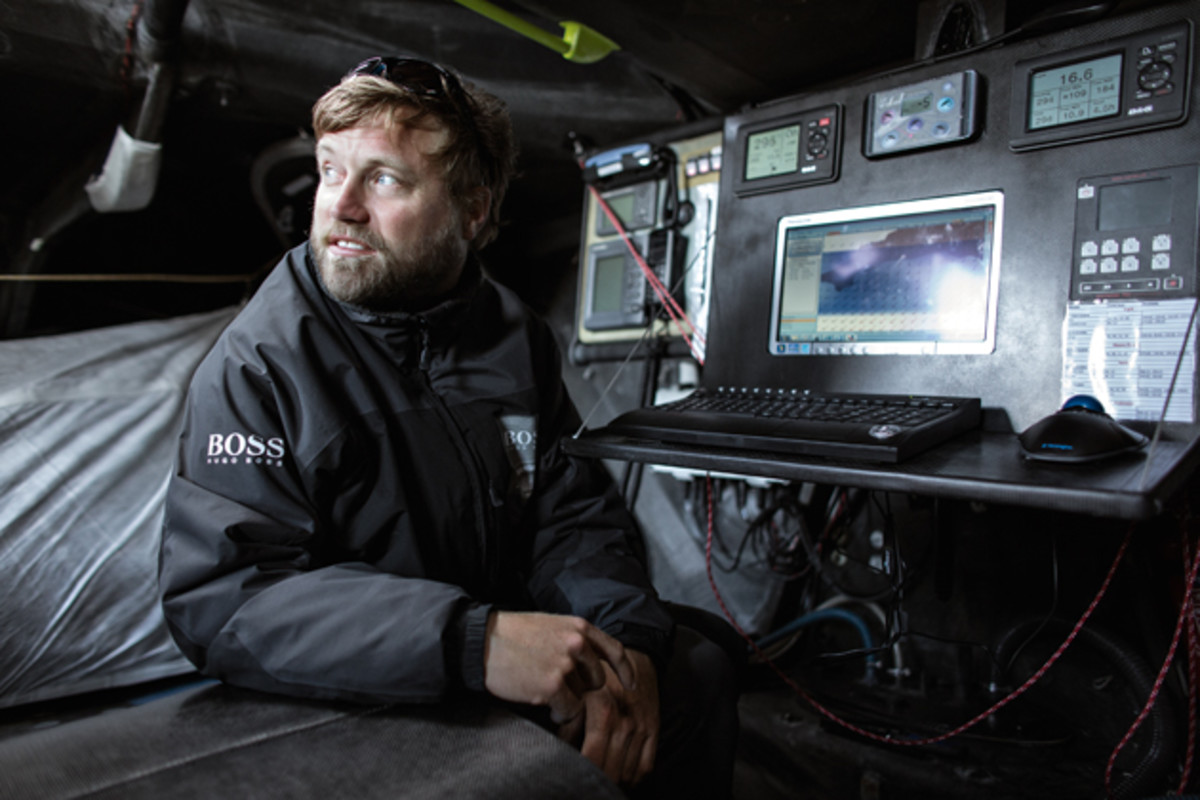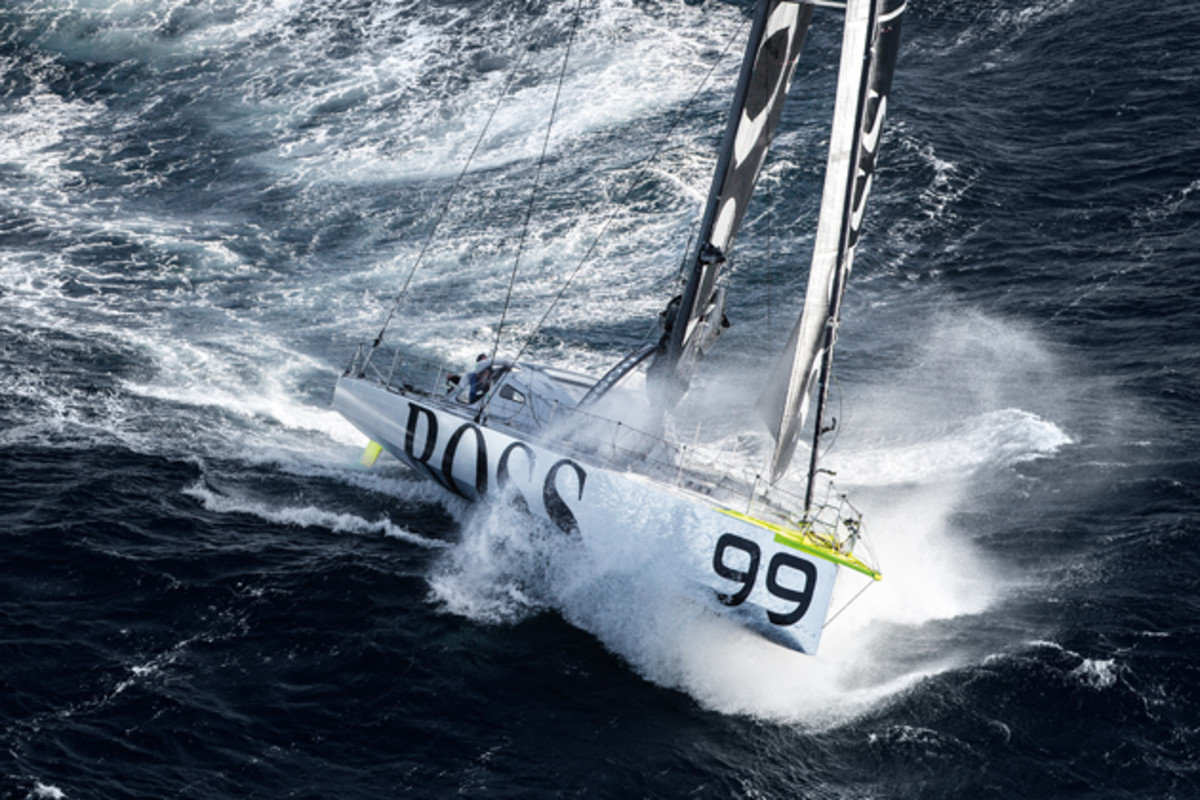Extreme Sailing: Alex Thomson preps for 90-day race around the world

Let’s start with the boat. We’re talking the F1 of sailing, a 60-foot yacht, the Hugo Boss. This mainly carbon fiber racing machine can hit speeds of 40 knots (46 mph) while designed to be as light as possible, but strong enough to withstand 26,000 nautical miles across open ocean. But what’s a boat without someone sailing it? And if you have a top-of-the-line racing yacht costing millions of dollars, you want someone willing to do extremes with the machine.
Alex Thomson knows extremes.
Now 40 years old, the North Wales native was only 25 when he won the Clipper Round the World Race, a record he still holds. He’s made himself famous by pulling off a keel walk in 2013 and a mast walk in 2014—yes, he walks the keel and mast of the boat while it sails and has the YouTube videos to prove it, which millions have watched.
His next extreme feat starts on Dec. 31 when Thomson pairs with Pepe Ribes of Spain to compete in the Barcelona World Race, in which pairs race nonstop around the world unassisted, an event that lasts around 90 days. This will be Thomson’s eighth around-the-world attempt and second in the Barcelona race.
“This is the most challenging and difficult sporting event in the world,” he tells Edge in the lead-up to the Barcelona event.
And a look at what he will put his mind and body through appear to back up that claim.
The Barcelona race is held every four years and this is its third running. Eight teams are scheduled to start in Spain. Thomson says he has prepared for this event for two years and in earnest for the last year, ever since crews modified the Hugo Boss with a new keel and ballast setup designed to make the boat lighter. Other changes to the yacht include making the cockpit, where the men work, deeper and more enclosed to keep them dryer and more comfortable.
Not your ordinary workout: Climbing the Great Wall of China
Pre-race, Thomson says, the physical preparation was typical, with a focus on maximum fitness and strength. Flexibility is also essential. “The hard work we do is in small, confined spaces,” he says. “Often you can’t lift in an efficient way.”
Working with only one other person, says Thomson, is particularly challenging. He and Ribes “turbo-charged” their relationship with personality tests and psychologists to help each of them understand the right way to operate. “It is more like a temporary marriage,” Thomson says. “You push the right buttons and not the wrong buttons to increase performance.”
Since they would be racing unassisted, the pair received medical training and had to learn meteorology. And, of course, knowing every possible thing about the boat, whether driving, trimming or maintaining, remains a must. With more than 20,000 individual components on board and 50 percent of around-the-world racers not finishing, mainly for technical reasons, understanding how to fix potential issues can keep the racers on course.

Once the race starts, the men will sleep in watches of three to four hours, but that routine gets quite flexible and often drops to one- or two-hour stints. Training for that isn’t worth it. “I have trained for that type of stuff before,” Thomson says. “There is some gain, but there is a lot of pain involved in that as well.”
With so much work to be done, the only physical activity other than driving the boat is a little effort to retain flexibility. But, “if you aren’t working you are eating or sleeping.” And at 7,500 calories consumed per day, that effort takes up quite a bit of time. The racers have their meals freeze-dried for efficiency, and nuts constitute a luxury.
Mentally, Thomson says, three main areas of the race keep you in a high-intensity situation. Shortly after launch, the Strait of Gibraltar with the Mediterranean Sea and Atlantic Ocean matching up with a “tiny gap that [the wind] blows all boats” through is a “heavy moment” just three days in. Cape Horn is tricky to navigate, and then the southern ocean has huge winds, waves unimpeded and icebergs to dodge.
“There is isolation, no rescue services, no fishing boats,” he says. “One of the things I love about sailing is when you leave sight of land you have a real understanding of how small your boat is and how small we are as a human race. There is no greater humbling experience than when [you are] in the south in a gale and you realize how small [you are].”

Sitting in the boat with his eyes only six feet or so above the sea level, at best Thomson can see eight miles away. Chances are, he won’t see another vessel until he finishes. In a past around-the-world race, the Vendee Globe, Thomson says he didn’t see land for two straight months. But he doesn’t mind that.
He says that standing in the cockpit doing 20 knots drinking a cup of coffee puts the biggest grin on his face. But along with the speed, Thomson loves the challenge. “So few people have done this,” he says. “When I sailed around the world in 80 days, I was one of less than 80 people who have raced around the world. Working 24/7 is exactly the kind of race that does it for me.”
Racing the Hugo Boss looks extreme from the outside. For Alex Thomson there’s simply no other option.
Tim Newcomb covers stadiums, design and gear for Sports Illustrated. Follow him on Twitter at @tdnewcomb.
